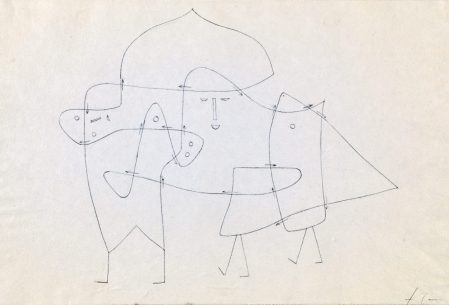
What is a world? Following Willard Van Orman Quine (1948), a world is ‘everything that is’. We may augment this vague description with what I have previously called Causal Entanglement, stemming from Plato (Sophist 247d–e): a world consists of everything that is in a direct or indirect causal relation with anything else. “The existing things are precisely those we can in principle causally interact with” (Berto 2012).
An illusory world would then entail that everything, except the subject who experiences the illusion, is illusory. It follows that all causal relations between the real subject and any illusory subjects or objects are themselves illusory, since illusory objects and subjects don’t Really exist. A subject who has no Causal relations has no Social relations and is therefore precluded from developing consciousness, meaning, thought, but consciousness could hypothetically be ‘imported’ from the Real world, the illusion being merely a false fork in the chain of experience. On this account, the illusory world may at first resembles the real world and be then led along a different causal path, divergent from reality. The real subjects who were previously interacted-with are now simulated and lack genuine agency. The key problem with this idea is that the simulated causal path is still caused by something in the real world, thereby maintaining a causal relation to reality. The simulated content may be in large part deceptive About reality, but it is still in every way a consequence of reality, therefore just a different perspective on the same reality. Any world which is in a causal relation with another world is just the same world. The idea of an illusory world constructed in this manner is therefore inconsistent, and should be characterised simply as Deception.
Another possibility of an illusory world may be akin to madness, a self-induced or random causal fork from the real past occurring not within the external world but within the individual consciousness itself. But if such an illusory world were a spontaneous occurrence within Real consciousness it would still be causally linked to real consciousness, perhaps also just a perspective on the real world rather than an illusory world, as discussed above. Conversely, if the causal fork were designed by another conscious agency, then, since reality is infinitely complex (at the very least more complex than any one conscious is able to grasp), no conscious agency could construct it in a way that would resemble the completeness of the real. As such, a designed world would always be materially inconsistent or radically incomplete, therefore not real. The embedded consciousness would then be isolated from the ontological kind necessary to ground its existence, and would itself become unreal.
If this world is unreal, and conscious existence is a relation with respect to other beings in the same world, then if those other beings are unreal then I am also unreal; but ‘I think therefore I am’, therefore I am real, therefore the beings I consciously relate to are real, therefore at least some of the world I am conscious of is real. We may experience illusions About reality, but the illusion can never resemble the completeness of a world; consciousness entails existence of something real, apart from the consciousness itself.
- Berto, Francesco. “To Be Is To Have Causal Powers”: Existence and Nature in Analytic Metaphysics. In Favaretti M., Plebani M., editors, Existence and Nature: New Perspectives, 2012.
- Quine, Willard Van Orman. On What There Is. Review of Metaphysics, 1948.